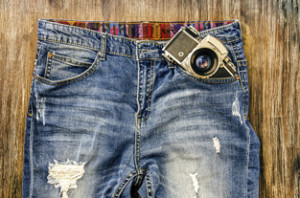Insta-ROI? New Service Makes Instagram a Retailer’s Digital Storefront
by aschmidt
 Even though Instagram is barely three years old, it leads the field in terms of social engagement; according to marketing and analytics company Curalate, users are interacting with brands on Instagram nearly 60 times more than on Facebook, and over 100 times more than on Twitter. However, Instagram has traditionally been difficult for retailers to monetize. Although many brands enjoy a loyal Instagram following, the typical answer when asked about Instagram ROI is that a presence on the social network more of asset to foster engagement and brand loyalty which are difficult to measure in terms of dollars and cents. But a new service could change all that.
Even though Instagram is barely three years old, it leads the field in terms of social engagement; according to marketing and analytics company Curalate, users are interacting with brands on Instagram nearly 60 times more than on Facebook, and over 100 times more than on Twitter. However, Instagram has traditionally been difficult for retailers to monetize. Although many brands enjoy a loyal Instagram following, the typical answer when asked about Instagram ROI is that a presence on the social network more of asset to foster engagement and brand loyalty which are difficult to measure in terms of dollars and cents. But a new service could change all that.
First, why are Instagram analytics and ROI so difficult to measure? The photo app’s sparse functionality doesn’t allow users to add links to individual posts, which proves to be a disadvantage for brands that are looking to encourage further browsing or purchasing of products from their Instagram posts. For example, Nordstrom recently posted a photo of a pair of brown Steve Madden boots, garnering 15,200 “likes” from their more than 637,000 Instagram followers. While the numbers are impressive, in the past the effect would be short-lived, because engagement would essentially cease once the “likes” and comments stopped rolling in. Even willing buyers would have no straightforward means to purchase the boots on the spot; they would basically be relegated to leaving Instagram and then sifting through Nordstrom’s massive website to find them, or perhaps performing a Google search to try and track them down.
In the minds of most marketing specialists, this type of scenario is far from ideal, as it can produce an untold amount of lost sales and lead generation opportunities. Although many brands on Instagram have acknowledged this missing link between social traffic and sales revenues, no comprehensive solution was available to remedy the situation – until now. A new service developed by Curalate entitled Like2Buy has accomplished the goal of making Instagram “shoppable.” Using Like2Buy, brands can place a link at the top of their profile page (the one link that Instagram allows) that will refer fans to an elegant e-commerce portal displaying the various products that have been featured on their Instagram feed. Users can browse from among a retailer’s different Instagram photos, click the image of the product they would like to buy, and then be taken to a secure checkout page where they can complete their purchase.
Nordstrom is the first retailer to pilot Like2Buy, but other heavy-hitters have signed up as well, including Target and the popular young women’s fashion outpost Charlotte Russe. Other retailers such as Neiman Marcus and Gap are in the process of implementing Like2Buy, and more than 450 companies are currently working with Curalate to plan upcoming rollouts. As mobile e-commerce continues to grow at a blistering pace, the ability to shop directly from a retailer’s Instagram feed is a match made in heaven for mobile-savvy social media users. Like2Buy is a bonanza for retailers as well, as it enables them to unlock ROI opportunities from the countless hours they have invested into building their Instagram presence.
Like2Buy bills itself as a simple solution for retailers to monetize their Instagram accounts. Curalate’s website highlights the following features of Like2Buy:
- It can be set up within minutes, and requires no back-end technical wizardry to launch
- No downloads, user registrations or third-party payment systems are required
- Companies can monetize a fan’s previous likes by converting them into a personalized wish list
- Seamlessly drives users to the retailer’s checkout page for purchase; no traffic redirection to intermediary sites
As the Visual Web continues to shape the future of e-commerce, Curalate has positioned itself to take advantage of this game-changing trend by offering a solution that enables brands to interact with consumers in a primarily visual format. Countless studies have proven that human beings respond to images in a completely different manner than they do words or text, and brands that capitalize on this age-old fact will position themselves ahead of the curve in terms of the future of e-commerce. In recent months, many large websites including A&E Networks, NBC News and the Weather Company have all shifted from text-heavy web pages to layouts that feature images as the primary element of their content. Online retailers are also waking up to the fact that a large portion of their online audience prefers to shop from interfaces that emphasize images instead of large blocks of text. Curalate has opened up new opportunities for image-centric online commerce, and companies that plan to thrive in the coming years will more than likely need to adjust their communication style to fit a visually-driven online audience as well.
SHARE
Posted in Instagram, Social Media
